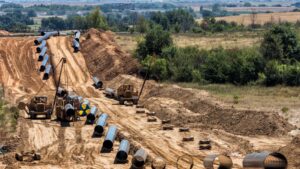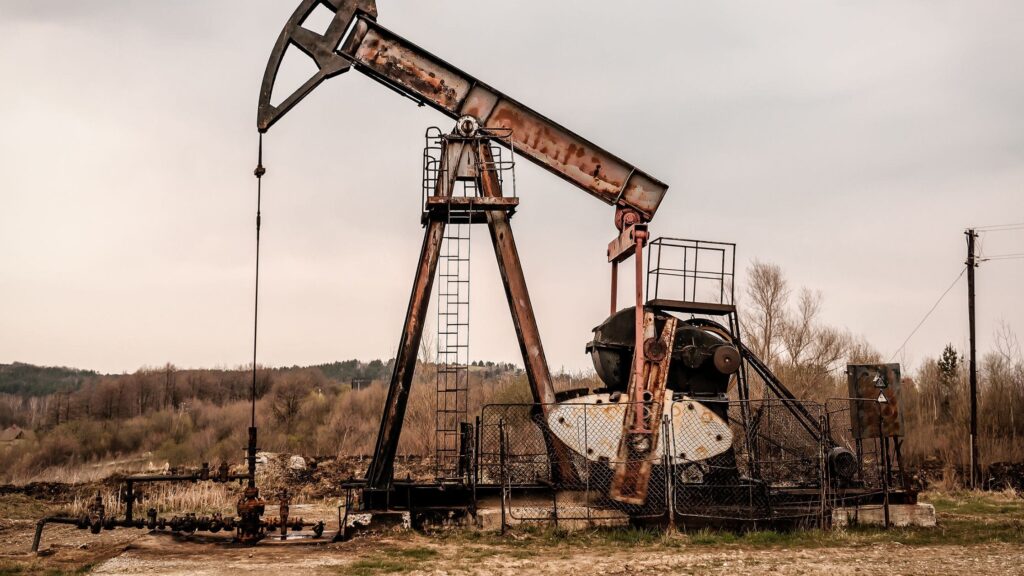Does Indiana Have Mineral Rights?

In Indiana, mineral rights are a legal provision that allows individuals or entities to extract and utilize underground resources such as oil, gas, and minerals. The concept of mineral rights in Indiana traces back to the late 1870s with the discovery of the Trenton Field, the state’s first large oil field, in 1876. This discovery marked the beginning of a substantial oil and gas boom in east-central Indiana, which continued into the early 20th century.
Surface Rights vs Mineral Rights in Indiana
Understanding the distinction between surface rights and mineral rights is crucial. Surface rights pertain to the ownership of the land itself, while mineral rights refer to the ownership of the resources below the surface. In Indiana, these rights can be owned separately, meaning a property owner can possess the surface rights without holding any claim to the minerals underneath.
What are the Major Oil and Gas Fields in Indiana?
Indiana’s landscape is dotted with significant oil and gas fields, each contributing to the state’s energy sector and economic development. Here’s a closer look at some of the major fields:
- Trenton Field: Discovered in 1876, this field catalyzed the oil boom in Indiana. Located in east-central Indiana, it has been a staple in the state’s oil production history.
- Lima-Indiana Field: Stretching into Indiana, this field has been crucial for both oil and gas outputs, impacting local economies and contributing to regional development.
- Illinois Basin: While primarily located outside Indiana, the Illinois Basin affects mineral extraction efforts in the southwestern parts of Indiana, influencing both oil and gas production strategies.
What are the Main Minerals Found in Indiana?
Indiana is not only a hub for oil and gas but also rich in diverse minerals essential for various industries. Here are some of the predominant minerals found throughout the state:
- Limestone: Widely quarried in Indiana, limestone is used in building construction and as a crucial component in the manufacture of cement.
- Sandstone: Known for its durable properties, sandstone is another key material used extensively in construction projects across the state.
- Coal: Indiana’s coal reserves are a major part of its mining industry, primarily used for power generation and as a critical economic resource.
How to Find Mineral Rights Ownership in Indiana
Determining the ownership of mineral rights in Indiana involves several steps, which are crucial for anyone looking to invest, develop, or simply ascertain their rights over the minerals beneath their land. Here’s how you can navigate this process:
- Consult County Clerk’s Records: Begin by visiting the county clerk’s office where the property is located. Mineral rights and property deeds are recorded here.
- Engage a Landman: Professionals known as landmen specialize in researching mineral rights ownership and can help trace the historical ownership of the rights.
- Title Search Company: Hiring a title search company can also provide a detailed report on the mineral rights associated with a piece of property. This is particularly useful in complex cases with multiple historical transactions.
- State Mining Agency: Indiana’s state mining agency may also have records or useful information regarding mineral rights, especially for areas with active or historical mining operations.
How to Search for Mineral Rights Records in Indiana
For those needing to perform a detailed search on mineral rights records in Indiana, the following steps can be followed to obtain accurate and comprehensive information:
- Online Resources: Begin with online databases that offer access to land records. These databases can provide preliminary information that might indicate the presence of mineral rights.
- Visit Local Recorder’s Office: For detailed and definitive records, visit the local recorder’s office in the county where the property is located. They maintain archives of all land transactions, including transfers of mineral rights.
- Hire a Professional: If the records are complex or difficult to interpret, consider hiring a professional landman or a legal expert in mineral rights to assist in your search. They can provide insights and guidance through the more nuanced aspects of property and mineral law in Indiana.
How Do You Claim Mineral Rights in Indiana?
Claiming mineral rights in Indiana is a process that involves several key steps, ensuring that the rights are legally recognized and properly registered. Here’s a straightforward guide to help you through the process:
- Property Assessment: Determine whether the mineral rights are already owned or if they are open for claim. This involves checking current property deeds.
- Legal Consultation: Consult with a lawyer specializing in mineral rights to understand the legal framework and requirements in Indiana.
- Document Preparation: Prepare necessary documentation, including a claim of mineral rights, which outlines the specific rights being claimed and the property involved.
- County Recorder’s Office: File the claim documents with the county recorder’s office where the property is located to register the claim officially.
- Maintain Active Use: If applicable, maintain active use of the mineral rights through extraction or other operations to establish ongoing ownership.
How Does Mineral Rights Inheritance Work in Indiana?
Inheriting mineral rights in Indiana can be a complex process, influenced by specific legal stipulations and individual circumstances. Here’s a detailed look at how this process generally unfolds:
- Will and Testament: Typically, mineral rights are passed down through a will. The will should clearly specify the distribution of both surface and subsurface rights.
- Probate Process: The estate goes through probate, where the will is validated, and assets are legally transferred to the heirs.
- Separate Rights: It’s important to note that in Indiana, mineral rights can be severed from surface rights, meaning they might be inherited independently.
- Legal Documentation: Heirs may need to file specific documents with the county recorder to update the ownership records officially.
- Tax Considerations: Inheritors should also consider potential tax implications, such as inheritance taxes or income generated from the mineral rights.
Do you have to pay taxes on mineral rights in Indiana?
Owning mineral rights in Indiana involves certain tax responsibilities that owners must be aware of to avoid legal complications. Here’s what you need to know about the taxation of mineral rights in the state:
- Property Taxes: Mineral rights are considered real property in Indiana and are subject to property taxes. The assessed value of the mineral rights is based on their current and potential future production.
- Income Taxes: Revenue generated from the extraction of minerals (e.g., oil, gas) is also subject to state income taxes. Owners must report this income annually.
- Severance Taxes: Indiana may impose a severance tax on the extraction of nonrenewable resources, which is a tax on the removal of minerals from the land.
Example: If a landowner in Manatee County extracts limestone worth approximately $50,000, they would need to pay property taxes based on the assessed value of the mineral rights and income taxes on the revenue generated from the limestone extraction.
How Much Are Mineral Rights Worth in Indiana?
In Indiana, the value of mineral rights can vary significantly based on the type of mineral resources present and the economic conditions affecting supply and demand. Here are some general guidelines and estimated values in USD for mineral rights per acre in Indiana, which might help provide a clearer picture:
- Oil and Gas: In regions with productive oil and gas fields, mineral rights can be particularly valuable. Prices can range from:
Low Production Areas: Approximately $500 to $2,500 per acre.
High Production Areas: In more productive areas or those with proven reserves, prices can escalate to between $3,000 and $10,000 per acre, depending on the current market and the potential for future yields.
- Coal: The value of coal mineral rights can vary widely depending on the market demand and the seam quality. Prices might range from:
$1,000 to $4,000 per acre, with variations based on accessibility, coal quality, and proximity to processing facilities.
- Industrial Minerals (like Limestone): Indiana is known for its high-quality limestone. The value of mineral rights for limestone can also vary:
$500 to $1,500 per acre, influenced by the purity of the limestone, regional demand, and the scale of the operation.
How Much Are Mineral Rights Worth Per Acre in Indiana?
Determining the per-acre value of mineral rights in Indiana requires a detailed understanding of both the specific location and the type of mineral resource. Here are some illustrative figures:
- Productive Oil and Gas Fields: In areas with active oil and natural gas extraction, mineral rights can range from $1,000 to over $4,000 per acre, depending on the production rates and the proven reserves.
- Coal and Limestone: For minerals like coal and limestone, the value per acre can be lower or comparable, depending on the scale of operations and the quality of the resource.
Leasing Mineral Rights Value
Leasing mineral rights can provide a steady income stream without the need to sell the rights outright. The value of leasing mineral rights in Indiana varies based on several factors:
- Type of Mineral: Different minerals have different values. For instance, rights to extract natural gas or oil might fetch higher lease rates than limestone or sand due to the higher energy market prices.
- Market Conditions: The current market conditions greatly affect leasing rates. High demand for oil and gas, for example, can increase leasing rates.
- Production Capability: Properties proven to have high production rates are typically more valuable. If geological surveys and past production data suggest a high yield, the leasing rates can be significantly higher.
Non-producing Mineral Rights Value
Non-producing mineral rights, or “non-producing minerals” (NPM), refer to mineral rights that have potential for production but are currently not being extracted. The value of NPMs can be speculative and is generally lower than producing mineral rights. Key considerations include:
- Potential for Future Development: If there is potential for future extraction, these rights can still hold significant speculative value.
- Geological Surveys and Exploration Data: Detailed geological data can increase the value of non-producing mineral rights if they indicate a likelihood of mineral deposits.
- Location and Accessibility: Rights in areas with easier access to mining or drilling infrastructure might also have higher values, even if not currently producing.
Producing Mineral Rights Value
The value of producing mineral rights can be significantly higher than non-producing rights due to the immediate revenue they generate. Here are key factors influencing their value:
- Current Production Rates: Properties with high production rates generally command higher prices. In Indiana, areas with active oil or natural gas extraction can see mineral rights valued at several thousand dollars per acre, depending on the output and the market conditions.
- Market Prices of Minerals: The value of producing mineral rights is closely tied to market prices. For oil and natural gas, global market trends can cause fluctuations in rights values. High market prices can lead to increased values of mineral rights and vice versa.
- Contracts and Agreements: The details of leasing agreements, such as royalty rates and lease terms, also play a crucial role. Higher royalty rates, favorable to the rights holder, enhance the value of producing mineral rights. In Indiana, typical royalty rates from oil and gas leases can range between 12% to 18%, influencing the overall profitability and value of the rights.
- Legal and Environmental Regulations: Zoning regulations and environmental policies in Indiana can affect operational practices and profitability. Stricter regulations can limit extraction processes, potentially reducing the value of mineral rights.
To illustrate, consider a producing gas field in Central Indiana where the extraction technology is efficient, and the infrastructure is well-developed. Here, mineral rights might be valued at $4,000 to $10,000 per acre if the production is steady and the market prices are favorable. These figures are dynamic and can shift with changes in technology, market demand, and regulatory environments.
How to Buy Mineral Rights in Indiana
Purchasing mineral rights in Indiana can be a significant investment, offering potential long-term returns through the extraction of valuable resources such as oil, gas, and coal. Here’s a step-by-step guide to help you navigate the process effectively:
- Research and Identify Potential Properties: Start by identifying properties with potential mineral deposits. Use resources such as the Indiana Geological Survey and property records to find lands with historical or expected mineral productivity.
- Conduct a Title Search: Before any purchase, ensure a thorough title search is performed to confirm that the mineral rights are included with the land and are free from disputes or liens. Engage with a title company familiar with Indiana law to assist in this process.
- Evaluate the Mineral Rights: Assess the value of the mineral rights through geological surveys and professional appraisals. Consider hiring a geologist or a mining engineer to evaluate the resource potential of the property.
- Negotiate Terms: Once you have decided on a property, negotiate the terms of the sale. This includes the price, the rights being transferred, and any specific conditions or royalties involved in the contract.
- Legal Documentation and Closing: Engage a lawyer specialized in mineral rights to draft or review the sales agreement ensuring all legal requirements are met according to Indiana statutes. Once everything is agreed upon, close the deal and register the transfer of rights at the local county recorder’s office.
How to Sell Your Mineral Rights in Indiana
Selling mineral rights can provide a lump sum upfront, often attractive for those looking to capitalize on their property’s underground assets. Follow these steps to ensure a smooth transaction:
- Valuation of Mineral Rights: Determine the value of your mineral rights with the help of an experienced appraiser who understands the oil, gas, and mineral markets in Indiana. Factors like existing production data, commodity prices, and lease agreements influence the valuation.
- Market the Mineral Rights: You can choose to market the rights privately, through specialized brokers, or by listing them on platforms that cater to mineral rights transactions. Include detailed information about the type of minerals, production history, and any existing leases.
- Negotiate Offers: Evaluate offers based on the price and terms such as royalties and the duration of the agreement. Be prepared to negotiate to secure terms that meet your financial goals and legal stipulations.
- Legal and Contractual Procedures: Finalize the sale with a legally binding contract that specifies the details of the transaction. Ensure the contract is reviewed by a lawyer who specializes in mineral rights to avoid future legal complications.
- Transfer of Rights: Complete the sale by transferring the mineral rights to the buyer through the county’s recording office where the property is located. Ensure all documents are correctly filed to officially record the transaction.
How to Transfer Mineral Rights Ownership in Indiana
Transferring mineral rights in Indiana involves several specific legal steps to ensure the transaction is legally binding and recognized. Here’s how you can navigate this process effectively:
- Review the Current Deed: Check the existing deed to ascertain that it explicitly includes mineral rights. This information might be contained in a separate mineral deed or included in the land deed.
- Draft a New Mineral Deed: Have a specialized attorney draft a new mineral deed. The deed should specify the details of the mineral rights being transferred, including the type of minerals and the extent of the rights.
- Secure a Title Search: Conduct a title search to ensure there are no undisclosed liens or encumbrances that could affect the transfer. This step is crucial to verify clear ownership.
- Signatures and Notarization: Both the seller and buyer must sign the deed in the presence of a notary. This step is essential for the document to be legally valid.
- Record the Deed: File the signed and notarized deed with the county recorder’s office where the property is located. Recording the deed makes the transfer public record, which is necessary for the new ownership to be legally recognized.
Update the Tax Records: Notify the local tax assessor’s office of the change in ownership to ensure that future tax bills are sent to the new owner.
Conclusion
Understanding the intricacies of buying, selling, and transferring mineral rights in Indiana is crucial for leveraging these valuable assets effectively. This guide outlines essential steps and considerations, aimed at simplifying these complex transactions. By following these guidelines, you can navigate the legal landscape of mineral rights with confidence, ensuring that your investments are secure and your rights are properly managed.
Frequently Asked Questions
Do Mineral Rights Expire in Indiana?
No, mineral rights in Indiana do not expire merely due to the passage of time. However, if mineral rights are severed from the surface rights and remain unused, they can potentially revert to the surface owner under specific conditions dictated by the Dormant Mineral Act, especially if they remain unused for a period of 20 years without any express claim or development.
What Happens to Indiana Mineral Rights When Someone Dies?
When a mineral rights holder in Indiana passes away, their rights are typically transferred to their heirs or as dictated by their will. If the deceased did not leave a will, the mineral rights are distributed according to Indiana’s intestacy laws, which govern inheritance in the absence of a will.
What is the Dormant Mineral Act in Indiana?
The Indiana Dormant Mineral Interest Act, enacted in 1971, is designed to resolve issues related to inactive mineral rights. Under this Act, if mineral rights are severed from the surface rights and remain unused for twenty years, they may automatically revert to the current surface owner unless the mineral rights owner has actively used the mineral interest. Active use is defined as the actual or attempted production of minerals, the payment of rents or royalties, or the payment of taxes on the minerals within this twenty-year period. Furthermore, the rights owner can prevent the reversion by filing a formal claim in the local county recorder’s office during this period. This legislation aims to encourage the utilization of mineral resources and prevent inactive mineral rights from hindering land development.







